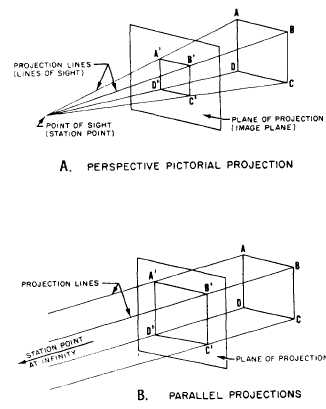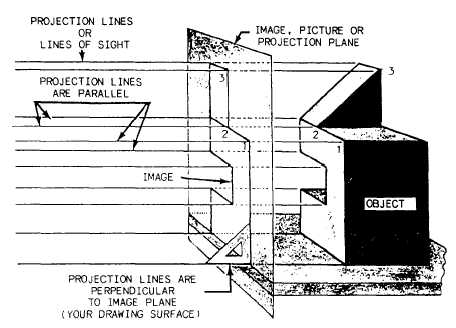Figure 5-2.-Types of projections.
(fig. 5-2) is further classified into subtypes
according to the direction of its projection
lines relative to the plane of projection. If the
projection lines, in addition to being parallel to
each other, are perpendicular (normal) to the
plane of projection, the result is an orthographic
projection. If they are parallel to each other but
oblique to the plane of projection, the result is
an oblique projection.
To better understand the theory of projection,
you must become familiar with certain elements
that are common to each type of projection. Some
of these elements are defined below.
The POINT OF SIGHT (or STATION
POINT) is the position of the observer in
relation to the object and the plane of projection
(fig. 5-2). It is from this point that the view of
the object is taken. The point of sight is changed
to give different views of the same object; hence,
there must be a different point of sight for each
view. Imagine yourself looking first at the front
of an object, then down at the top, and then at
the right or left side, as the case may be. Each
additional view requires a new point of sight.
The observer views the features of the object
through an imaginary PLANE OF PROJEC-
TION (or IMAGE PLANE). In parallel projec-
tion, this theoretical transparent plane is placed
between the point of sight and the object, as
shown in figure 5-2. For perspective pictorials, it
Figure 5-3.-Basic orthographic projection.
5-2




